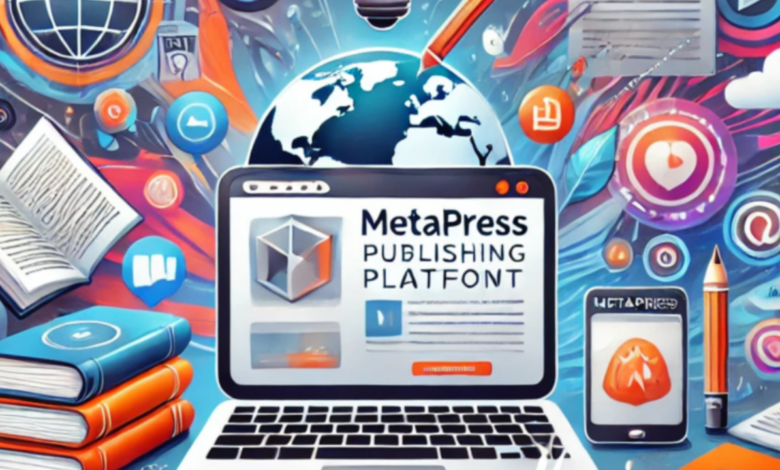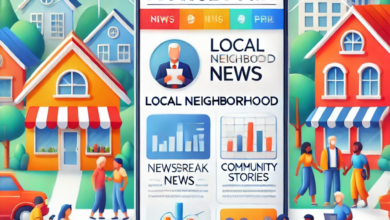Metapress vs. Traditional Publishing: What’s the Difference?

In today’s fast-evolving digital world, content creation and publishing have undergone significant transformations. Traditional publishing, which has been the cornerstone of content distribution for centuries, is now facing competition from modern platforms like Metapress. With the advent of new technology and digital solutions, creators, bloggers, journalists, and businesses are increasingly turning to digital publishing platforms to reach global audiences. But how does Metapress compare to traditional publishing? In this article, we’ll explore the key differences between Metapress and traditional publishing, helping you understand how each approach works and why one might be more suited to your needs.
What is Metapress?
Before diving into the comparison, it’s important to understand what Metapress is. Metapress is a modern, user-friendly digital publishing platform designed for content creators, bloggers, and businesses to publish and monetize their work. It allows creators to seamlessly manage, distribute, and monetize content across various channels like blogs, articles, eBooks, and more. Metapress offers a range of tools and features that simplify the publishing process, from design templates to audience analytics.
Unlike traditional publishing, which often involves lengthy processes and intermediaries, Metapress empowers creators to publish directly to their audience with minimal friction. The platform is built for ease of use and flexibility, making it accessible to both experienced and novice content creators.
What is Traditional Publishing?
Traditional publishing refers to the long-established methods of content creation and distribution, often involving physical media like books, magazines, newspapers, and journals. In traditional publishing, content creators typically submit their work to publishers, who then take over the process of editing, design, printing, and distribution. Authors, journalists, and other creators must work within the constraints set by publishers, which can lead to significant delays and limitations in terms of creative control.
Traditional publishing houses typically focus on mass-market appeal, targeting broad audiences through established channels such as bookstores, libraries, and newsstands. This model has worked for centuries but has recently started to face challenges from digital platforms that allow creators to connect with their audience directly.
Key Differences Between Metapress and Traditional Publishing
1. Ease of Access and Control
One of the most significant differences between Metapress and traditional publishing is the level of control content creators have over their work.
- Metapress: With Metapress, content creators enjoy complete control over their content. There are no intermediaries, and the process is entirely self-driven. Creators can publish articles, blogs, or eBooks instantly, customize their design, and tweak their content as needed without waiting for external approval.
- Traditional Publishing: In traditional publishing, creators often have to rely on publishers to determine whether their work will be accepted. This process can involve numerous rounds of edits, feedback, and delays. Once the content is accepted, it is often subject to the publisher’s guidelines regarding format, design, and distribution. This model can be frustrating for creators who value autonomy over their work.
2. Speed of Publishing
- Metapress: One of the major advantages of Metapress is the speed with which content can be published. Thanks to its digital-first approach, content can be uploaded and made available to the audience almost immediately. Whether you’re publishing a blog post or an entire book, the process is fast and straightforward, allowing creators to share their work in real-time.
- Traditional Publishing: Traditional publishing, on the other hand, can be a long and drawn-out process. From submission to final print, it can take months for content to make it to the public. Additionally, content is often subject to several rounds of editing, approval, and design changes, all of which can add significant time to the publishing timeline.
3. Costs Involved
- Metapress: One of the key benefits of Metapress is the low cost of publishing. Since Metapress operates in the digital realm, there are no printing or distribution costs. Additionally, creators can choose between free plans or pay for premium features like advanced analytics or custom domain names. The platform also supports monetization options like ads and subscription services, allowing creators to generate revenue from their content.
- Traditional Publishing: Traditional publishing can be expensive, especially for authors or creators who wish to self-publish. Authors often have to cover the costs of printing, distribution, and marketing. Even when working with a publisher, a significant portion of the revenue goes to the publisher, leaving creators with less financial gain. These financial barriers can be a significant hurdle for many aspiring authors or content creators.
4. Monetization Options
- Metapress: Metapress offers a variety of monetization options for creators. These can include ad revenue, subscriptions, pay-per-view models, and affiliate marketing. Creators have full access to these revenue streams and can easily track their earnings through the platform’s analytics tools. This flexibility allows creators to monetize their content in a way that suits their audience and business model.
- Traditional Publishing: Traditional publishing typically offers a more limited set of monetization options. Authors usually receive royalties on the sale of their books, while publishers handle the bulk of the marketing and distribution. For writers and content creators, this means they have less control over how and when they earn money, and they often see a smaller share of the profits due to publisher cuts.
5. Distribution Channels
- Metapress: Metapress leverages digital platforms to reach a global audience instantly. With a strong focus on the internet, creators can publish their work across various channels, from personal websites to social media and third-party platforms like eBook retailers or online blogs. This means creators can distribute their content to a much larger audience without geographic restrictions.
- Traditional Publishing: Traditional publishing is limited to physical distribution channels like bookstores and newsstands. While digital distribution is becoming more common with the rise of eBooks, traditional publishers still primarily rely on physical media to reach their audience. As a result, creators may find their audience limited by geographic location or availability in certain regions.
6. Creative Control and Flexibility
- Metapress: The platform offers a high degree of creative control, allowing content creators to express their ideas freely. Whether you’re publishing a blog post, eBook, or any other form of digital content, Metapress allows for full customization of design, layout, and content. Creators are free to update, revise, and edit their work as needed.
- Traditional Publishing: Traditional publishing often comes with strict editorial guidelines. Publishers dictate many aspects of the content, including tone, format, and even subject matter. While this system has its merits, especially for more traditional or commercial writers, it can stifle creativity for those looking to push the boundaries of their work.
7. Audience Engagement
- Metapress: Metapress allows for direct engagement with your audience. Creators can interact with readers via comments, social media integrations, or email newsletters. The platform provides detailed analytics that help creators understand their audience’s preferences and behavior, allowing them to tailor their content accordingly.
- Traditional Publishing: Audience engagement in traditional publishing is much more limited. Authors may receive feedback through reviews or occasional interviews, but the publishing model typically keeps creators at arm’s length from their readers. This lack of direct interaction can make it harder for authors to build a loyal following.
Advantages and Disadvantages of Metapress vs. Traditional Publishing
Advantages of Metapress:
- Quick and easy publishing process.
- Complete creative control and autonomy.
- Low cost with flexible monetization options.
- Instant global distribution and reach.
- Enhanced audience engagement through analytics.
Disadvantages of Metapress:
- Limited to digital formats (no physical distribution).
- Dependence on digital marketing to attract an audience.
- Requires familiarity with technology and platform tools.
Advantages of Traditional Publishing:
- Established distribution channels and credibility.
- Professional editing and marketing support.
- Physical presence in bookstores and libraries.
Disadvantages of Traditional Publishing:
- Lengthy publication process.
- High costs involved with printing and distribution.
- Limited control over content and royalties.
Conclusion
The debate between Metapress and traditional publishing ultimately depends on the creator’s goals, audience, and content type. Metapress offers unmatched speed, flexibility, and creative control for digital-first creators. It’s a fantastic option for anyone looking to take charge of their publishing career, from bloggers to independent authors. On the other hand, traditional publishing still holds value for those seeking the credibility, resources, and physical distribution channels that come with working with established publishers. Understanding these differences can help creators make the right choice for their content and career goals.
FAQs about Metapress vs. Traditional Publishing
1. What are the main differences between Metapress and traditional publishing? The key differences include the speed of publishing, control over content, cost, and distribution methods. Metapress allows creators to publish quickly and maintain full control, while traditional publishing often involves delays and third-party involvement.
2. Can I make money through Metapress? Yes, Metapress offers various monetization options, including ad revenue, subscriptions, and affiliate marketing, allowing creators to earn money from their content.
3. Does Metapress offer physical distribution of content? No, Metapress is a digital publishing platform, so it only supports online distribution. If you’re looking for physical distribution, traditional publishing would be more suitable.
4. How long does it take to publish content on Metapress? Content can be published almost instantly on Metapress. Once your content is ready, it can be uploaded and made available to your audience immediately.
5. Which is better for independent creators: Metapress or traditional publishing? Metapress is generally a better option for independent creators due to its flexibility, low cost, and creative control. Traditional publishing may be more suitable for those seeking professional editorial support and physical distribution.
You May Also Read: https://usabestweekly.com/sky-protection-reviews/




